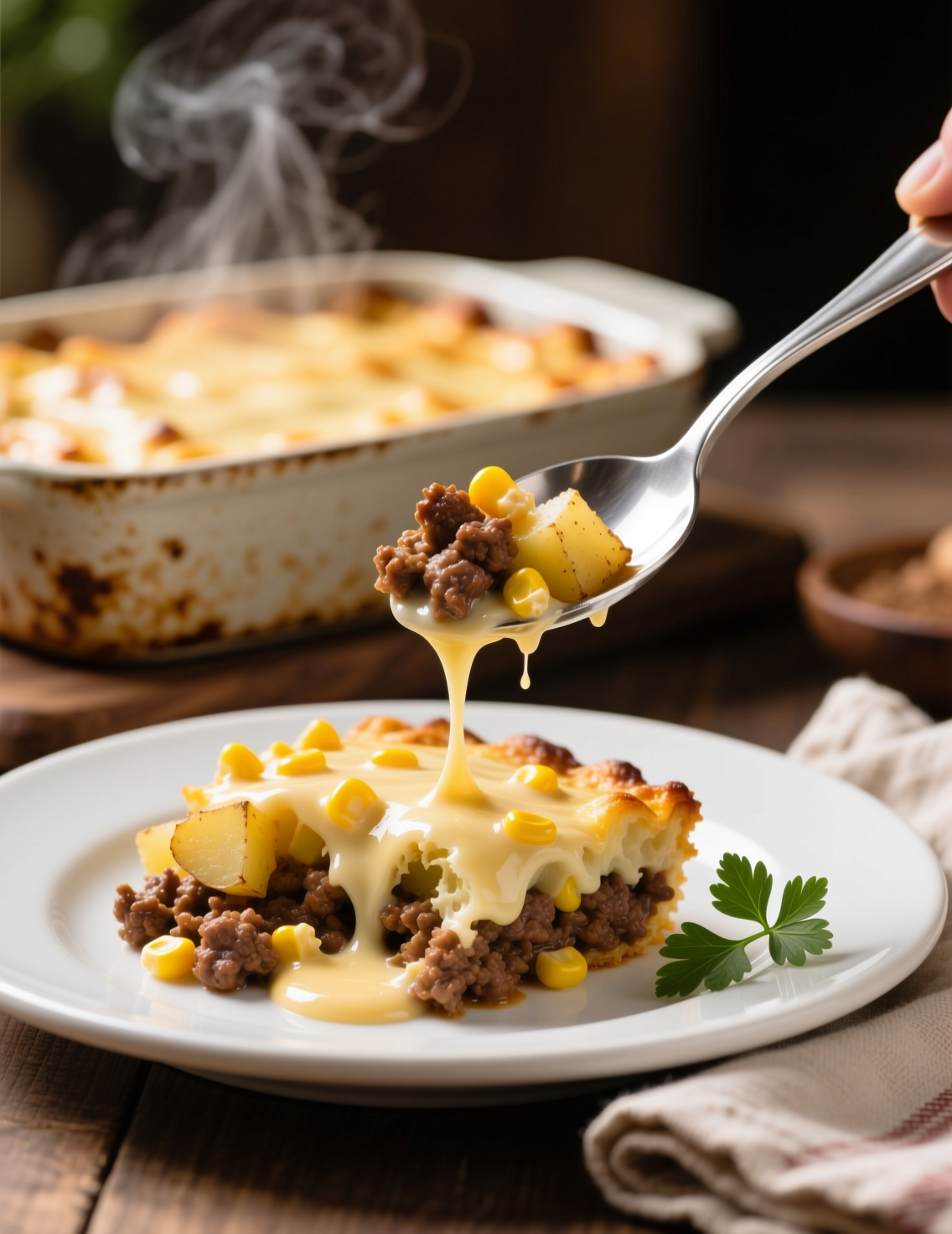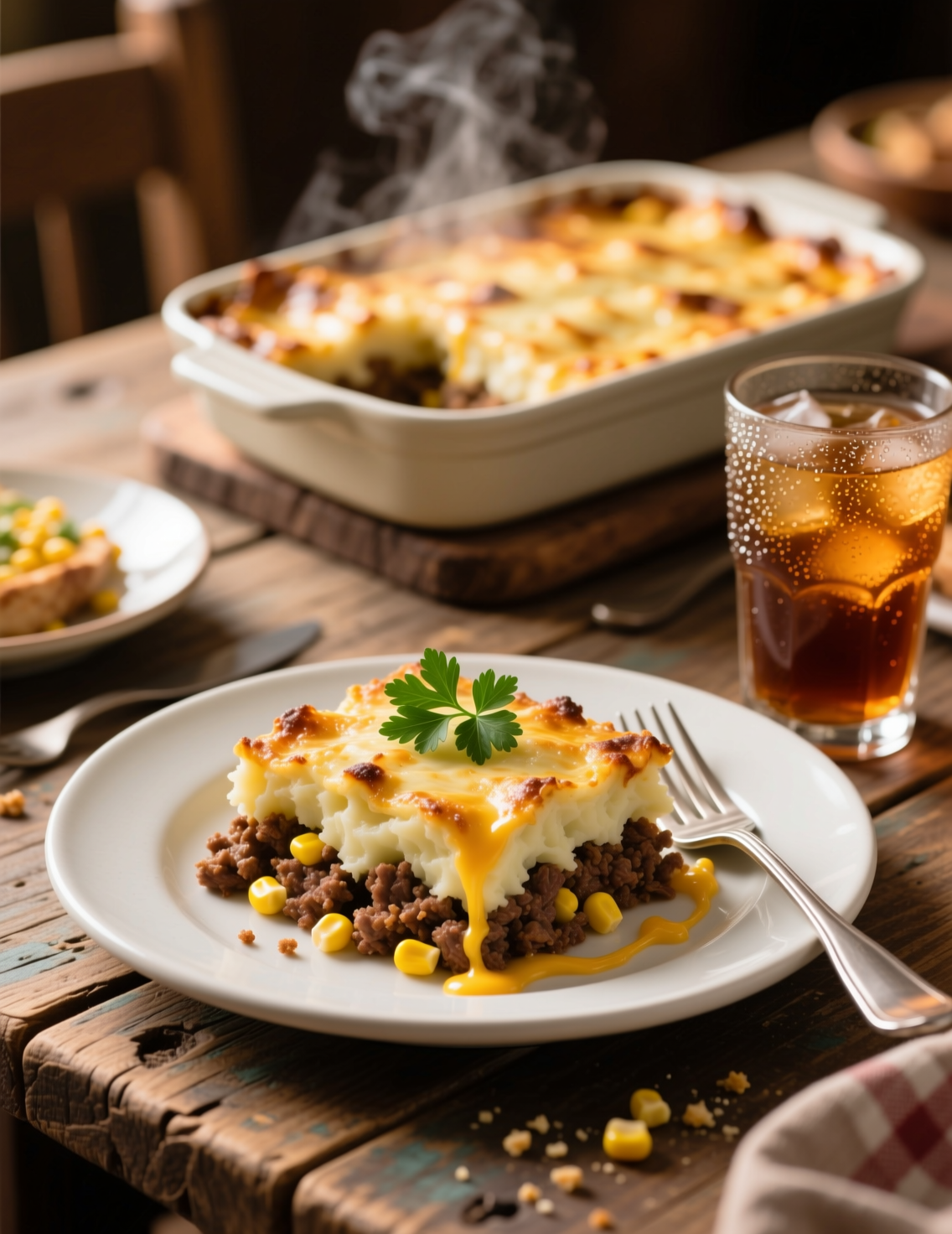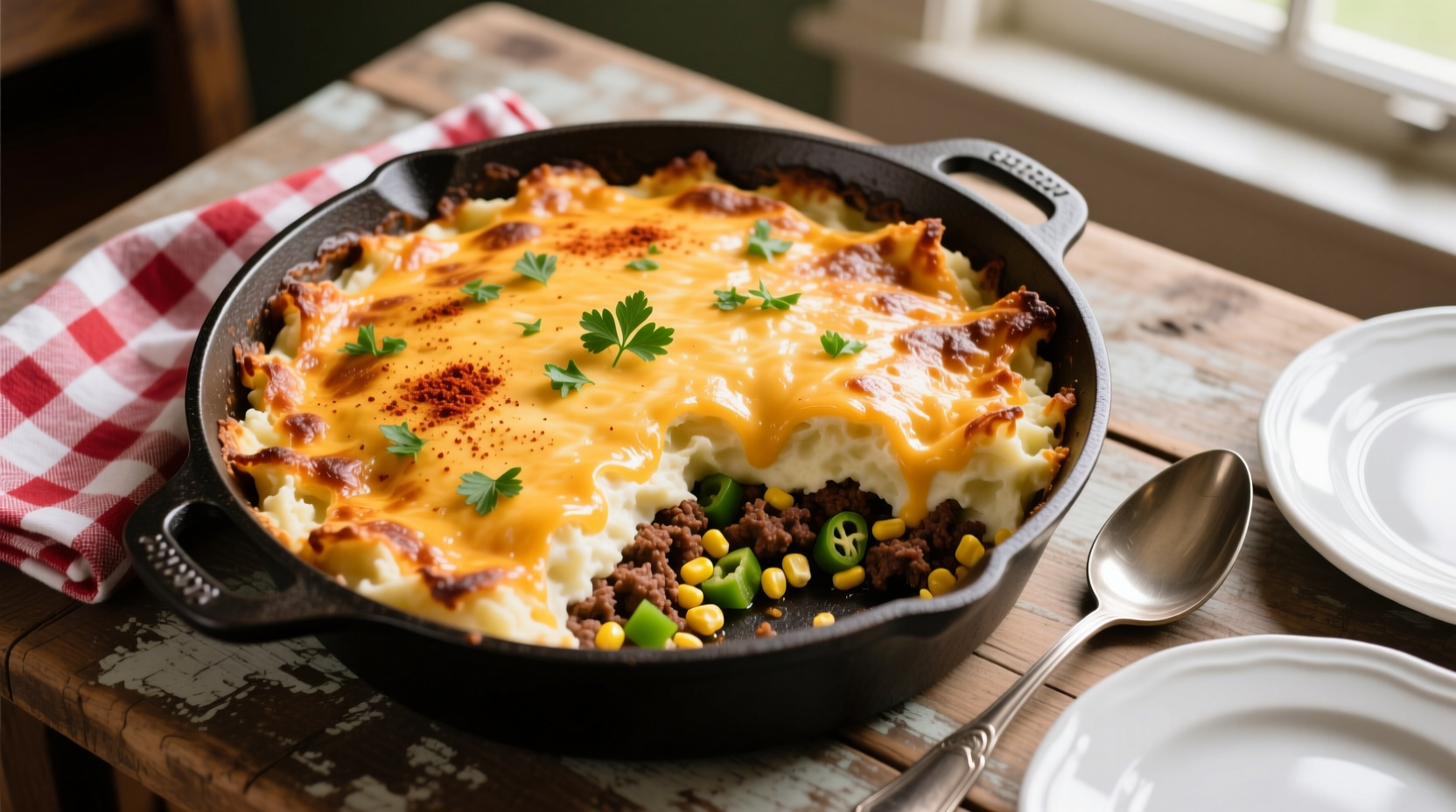Casseroles are the workhorses of home kitchens, but few have the bold, rustic charm of a Cowboy Casserole. This dish isn’t just about tossing meat, potatoes, and cheese into a pan. It’s about layering textures, balancing flavors, and making food that feels both filling and memorable. When people ask me about a reliable family-friendly recipe, I usually point them right here. This cowboy-style bake does more than just satisfy hunger. It creates a table moment.
What Exactly Is a Cowboy Casserole?
Cowboy Casserole is a hearty dish built on ground beef, creamy sauce, vegetables, and tater tots, baked till golden and bubbling. At its core, it’s comfort food with a western spin—something you can imagine being served after a long day’s work out in the fields. But don’t mistake its humble roots for lack of sophistication. Done right, it balances savory beef with creamy richness and crispy potato topping.
Casserole recipes like this first gained traction in American kitchens in the mid-20th century, when convenience met comfort. The “cowboy” title doesn’t mean it’s authentically from cattle drives, but the rugged, filling nature does carry that frontier spirit.
Why This Dish Works for Professionals Too
Many chefs wave off casseroles as “basic” or “home cook territory.” That’s a mistake. Dishes like Cowboy Casserole teach important principles of layering flavors and controlling texture. You’ve got ground beef browning, starch crisping, cheese melting, sauce binding—it’s a small study in culinary mechanics.
Restaurant kitchens have borrowed casserole-style layering for decades. Think lasagna, moussaka, shepherd’s pie. Cowboy Casserole is an American cousin with a simpler, accessible method. Professional cooks can refine it with spice control, sharper cheeses, or elevated sauces, but the fundamentals stay solid.
Ingredients That Make or Break the Recipe
A Cowboy Casserole for 6 servings typically needs:
- 1 pound (450g) lean ground beef
- 1 small onion, diced
- 2 cloves garlic, minced
- 1 can (10.5 oz) cream of mushroom soup (or a scratch-made béchamel with mushrooms if going pro)
- 1/2 cup sour cream
- 1 cup frozen mixed vegetables (corn, peas, carrots)
- 2 cups shredded cheddar cheese (sharp cheddar preferred for bite)
- 1 bag (about 32 oz) frozen tater tots
- Salt, pepper, smoked paprika to taste
On paper, simple. But notice the hidden choices. The fat ratio of beef matters; too fatty and it greases the dish, too lean and you lose depth. Onion needs a real sweat, not a quick toss. The choice between canned soup versus scratch sauce separates a weekday dinner from a professional kitchen variant.

Step-By-Step Cooking Method
Step 1: Brown the Beef
Heat a skillet to medium-high. Add beef and cook until browned, about 7 minutes. Drain excess fat if heavy. Toss in diced onion and garlic, sauté till translucent. This step sets the flavor foundation—don’t rush it.
Step 2: Build the Creamy Base
Stir in cream of mushroom soup and sour cream. If using scratch sauce, fold it here. The mixture should be thick but spreadable, not watery. Season with salt, pepper, smoked paprika.
Step 3: Add the Veggies
Mix in frozen vegetables. They’ll bake through later, so no need to pre-cook. Vegetables add color and freshness to balance the richness.
Step 4: Layer the Casserole
In a greased 9×13 baking dish, spread the beef mixture evenly. Top with a layer of shredded cheddar. Finish by arranging tater tots in neat rows across the surface. That crisp potato lid is signature—don’t just dump them randomly.
Step 5: Bake to Golden Perfection
Bake uncovered at 375°F (190°C) for 35–40 minutes. The tots should turn golden brown, cheese bubbling underneath. Rest for 5 minutes before serving. Resting lets everything settle into clean slices instead of collapsing.
Nutritional Considerations
A single serving from this recipe (about 1/6th of the pan) averages:
- Calories: ~520
- Protein: 24g
- Fat: 32g
- Carbohydrates: 36g
- Sodium: ~980mg
This isn’t a light dish. But that’s not its purpose. Cowboy Casserole is fuel food, intended to satisfy after labor or to serve as a weekend indulgence. Nutritionists often suggest balancing it with a fresh salad or roasted greens on the side.
Professional Variations
Upgrading the Sauce
Canned soup works for convenience, but chefs prefer scratch sauces. A mushroom velouté or a béchamel with caramelized shallots adds dimension that canned simply can’t.
Cheese Choices
Swap cheddar with Gruyère for nuttiness, or mix Monterey Jack for a creamy melt. Even a sprinkle of blue cheese crumbs before baking can shock the palate in the best way.
Potato Alternatives
Tater tots are iconic, but thin slices of par-cooked Yukon Golds give a more refined finish. Sweet potato rounds also work, adding subtle sweetness against savory beef.
Protein Switches
Ground turkey, lamb, or even chorizo can create unique spins. One catering chef I know swears by half ground beef, half breakfast sausage—it deepens the flavor spectrum.

Cultural Place of Cowboy Casserole
Comfort food studies show that dishes like this increase serotonin release by linking flavor with memory. Researchers at Cornell University found that 40% of comfort food cravings tie back to childhood meals. Cowboy Casserole lands squarely in that zone.
In the Midwest, community potlucks still feature variants of this recipe, sometimes called “tater tot hotdish.” Minnesota claims the hotdish as its own, where casseroles are not just meals but social glue. Cowboy Casserole is a playful branch of that tradition, slightly more “western” branded but rooted in the same culture of communal dining.
Common Misconceptions
Some assume Cowboy Casserole must always use canned soup and frozen tots. Not true. Those are simply convenient versions. Professional kitchens can make every element from scratch and still call it Cowboy Casserole.
Another myth: it’s too heavy for summer. Actually, scaled portions served with fresh tomato salad or pickled vegetables lighten it for warmer weather menus.
Emerging Trends
With the rise of “comfort food with a twist,” Cowboy Casserole is resurfacing in gastropubs. Chefs are reimagining it with grass-fed beef, organic potatoes, artisanal cheeses. Plant-based versions using lentils or Beyond Meat also find place on modern menus. A survey by Datassential in 2023 noted a 12% increase in casserole dishes appearing on U.S. casual dining menus compared to 2020. Cowboy Casserole rides that wave.
Tips for Perfect Execution
- Always preheat your oven fully. Under-heated ovens lead to soggy tots.
- Don’t skip resting time. It makes slicing neat and professional.
- Use freshly shredded cheese, not pre-shredded. Anti-caking agents in packaged cheese prevent smooth melting.
- Taste the beef mixture before layering. Adjust seasoning upfront, because once baked, it’s harder to balance.
Serving Suggestions
For a complete meal, serve with a crisp salad, roasted green beans, or even cornbread. Wine pairings? A Syrah works well—peppery enough to cut the richness. For beer lovers, go with a malty amber ale.
Presentation matters. In professional plating, cut the casserole into neat squares, garnish with a sprig of parsley or chive, and serve on a warmed plate. Even rustic food deserves care.
Conclusion
Cowboy Casserole is more than just meat and potatoes in a dish. It’s a story of American comfort food, of families gathered around weeknight dinners, of chefs reworking classics for modern menus. For 6 servings, it offers both heartiness and versatility, able to shift between a weeknight table and a professional kitchen demo.
The key takeaways: build flavor in the beef base, balance richness with vegetables, and let that crispy potato topping shine. Whether you’re a home cook making it for your kids or a chef riffing on tradition, the Cowboy Casserole proves that simple food, done thoughtfully, carries more weight than fancy dishes done without care.
FAQs
What is Cowboy Casserole made of?
It’s usually made with ground beef, vegetables, creamy sauce, cheese, and topped with tater tots.
How many servings does this recipe make?
This Cowboy Casserole recipe makes 6 hearty servings.
Can I make Cowboy Casserole without canned soup?
Yes, you can use a homemade mushroom or béchamel sauce for a fresher taste.
What cheese works best for Cowboy Casserole?
Sharp cheddar is classic, but Gruyère or Monterey Jack add great flavor too.
Can I prepare Cowboy Casserole ahead of time?
Yes, assemble it, cover, and refrigerate for up to 24 hours before baking.
How do I reheat leftovers?
Reheat in the oven at 350°F until warm, or microwave individual portions.
Can I freeze Cowboy Casserole?
Yes, wrap tightly and freeze for up to 2 months, then bake from frozen.
What’s the difference between Cowboy Casserole and Tater Tot Hotdish?
They’re nearly the same, but Cowboy Casserole often has a “western” branding twist.
How can I make it healthier?
Use lean beef, reduced-fat sour cream, and add more fresh vegetables.
What sides go best with Cowboy Casserole?
Fresh green salads, roasted vegetables, or cornbread pair beautifully.

Mariana is a passionate home cook who creates delicious, easy-to-follow recipes for busy people. From energizing breakfasts to satisfying dinners and indulgent desserts, her dishes are designed to fuel both your body and hustle.
When she’s not in the kitchen, she’s exploring new flavors and dreaming up her next recipe to share with the Foodie Hustle community.

